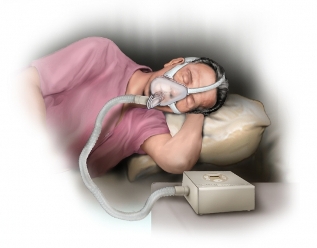Mechanism of action of continuous positive airway pressure therapy iv
Table of Contents
Table of Contents
Continuous positive airway pressure (CPAP) therapy is a treatment used to manage breathing difficulties, particularly those associated with sleep apnea. Healthcare regulations are put in place to ensure that patients receive the best possible care and to protect their rights.
Pain Points
Individuals with sleep apnea often suffer from tiredness, irritability, and a decreased ability to concentrate. Additionally, they have a higher risk of developing heart disease, stroke, and diabetes. However, CPAP machines can be bulky and uncomfortable, and not all insurance plans cover them. Further, healthcare regulations can be confusing to navigate.
Target of CPAP Therapy and Healthcare Regulations
CPAP therapy is primarily used to treat breathing difficulties associated with sleep apnea. Healthcare regulations aim to ensure that patients receive the best possible care and treatment, while also protecting their privacy and rights.
Summary of Main Points
This post has discussed CPAP therapy and healthcare regulations, including pain points, target, and the importance of these regulations. It explored how healthcare regulations can be used to protect patients and ensure that they receive the best possible care.
CPAP Therapy and Healthcare Regulations Explained
When I was first diagnosed with sleep apnea, I was hesitant to use a CPAP machine. I had heard that they were bulky and uncomfortable. However, after talking with my doctor, I decided to give it a try. I was surprised at how much better I felt after just one night of using it. CPAP therapy has made a huge difference in my daily life by providing restful sleep and increased energy.
In terms of healthcare regulations, these rules and guidelines are in place to ensure that healthcare providers offer high-quality care to their patients. For example, HIPAA regulations protect patients’ privacy rights by limiting who can access their medical records. By following healthcare regulations, providers can establish trust with their patients and provide the best possible care.
Healthcare Regulations in Depth
Healthcare regulations can be divided into several categories, including those related to patient care, billing and reimbursement, and medical privacy. Patient care regulations aim to ensure that patients are treated with respect and dignity and that they receive high-quality care. Billing and reimbursement regulations govern how healthcare providers are paid for their services, while medical privacy regulations protect patients’ personal health information.
Importance of CPAP Therapy and Healthcare Regulations
CPAP therapy can make a significant difference in the quality of life for individuals with sleep apnea. By improving sleep quality and reducing the risk of associated health problems, patients can lead healthier and more fulfilling lives.
Healthcare regulations are essential to ensure that patients receive the best possible care and treatment. By following these regulations, healthcare providers can establish trust with their patients and provide high-quality care that meets or exceeds industry standards.
Question and Answer
Q: Are CPAP machines covered by insurance?
A: Not all insurance plans cover CPAP therapy. However, many do, and patients should check with their insurance provider to determine coverage.
Q: What are some common side effects of CPAP therapy?
A: Some individuals may experience dry mouth, nasal congestion, or headaches when using a CPAP machine. These side effects can often be addressed by adjusting the equipment or treatment plan.
Q: What are the consequences of not using a CPAP machine when diagnosed with sleep apnea?
A: Sleep apnea can lead to serious health problems, including heart disease, stroke, and diabetes. By not using a CPAP machine, individuals with sleep apnea are at higher risk for these and other associated health problems.
Q: What are the penalties for not following healthcare regulations?
A: Penalties may vary depending on the type of violation and the severity of the offense. Healthcare providers may be subject to fines, legal action, and even loss of their license to practice.
Conclusion of Continuous Positive Airway Pressure Therapy and Healthcare Regulations
CPAP therapy and healthcare regulations are essential components of healthcare that can help ensure that patients receive high-quality care and treatment. By following these regulations, healthcare providers can establish trust with their patients and provide the best possible care, while individuals with sleep apnea can improve their quality of life through effective CPAP therapy.
Gallery
Mechanism Of Action Of Continuous Positive Airway Pressure Therapy IV

Photo Credit by: bing.com / airway pressure positive continuous therapy iv
Positive Airway Pressure Therapy For Heart Failure

Photo Credit by: bing.com / pressure airway positive continuous bi level therapy 1175 wjc heart failure v6 i11
Continuous Positive Airway Pressure [37]. (Internet, Google Images
![Continuous positive airway pressure [37]. (Internet, Google images Continuous positive airway pressure [37]. (Internet, Google images](https://www.researchgate.net/profile/Mohammed_Jaradat4/publication/281926605/figure/fig2/AS:668370873643016@1536363442451/Continuous-positive-airway-pressure-37-Internet-Google-images-CPAP-first-page-PAP.png)
Photo Credit by: bing.com / airway continuous cpap pap
Continuous Positive Airway Pressure Therapy | Nursing Information

Photo Credit by: bing.com / pressure continuous positive airway therapy
Continuous Positive Airway Pressure (CPAP) Devices Market

Photo Credit by: bing.com / pressure positive airway continuous cpap devices types market machine breathing bipap different insights premium press release



